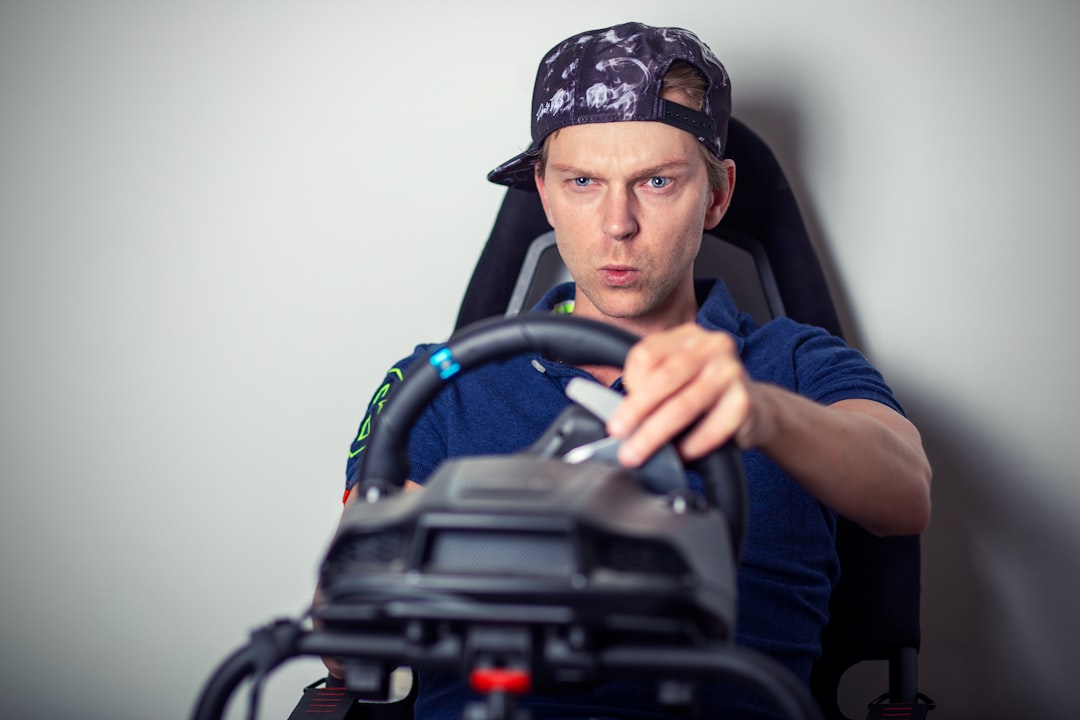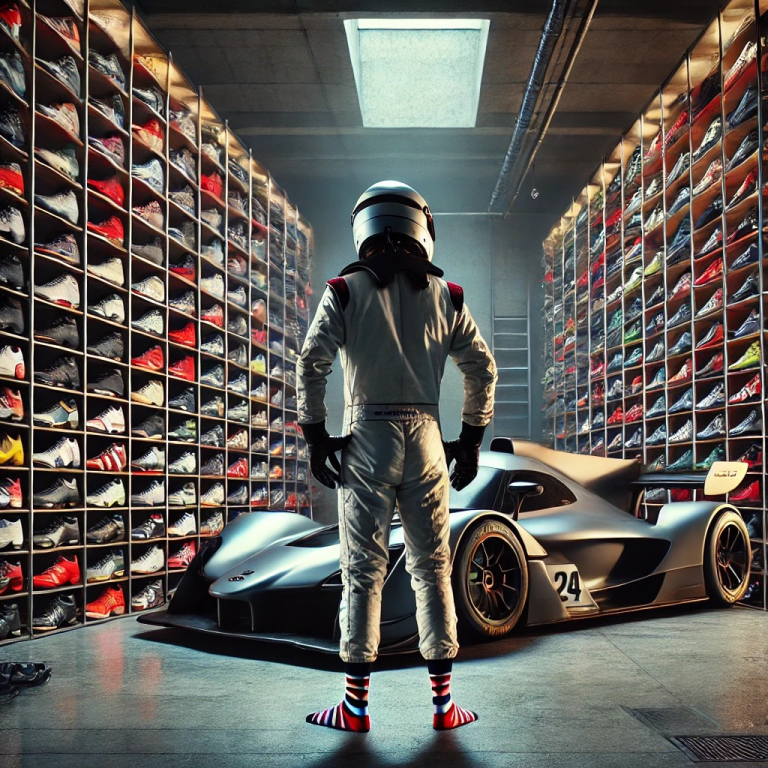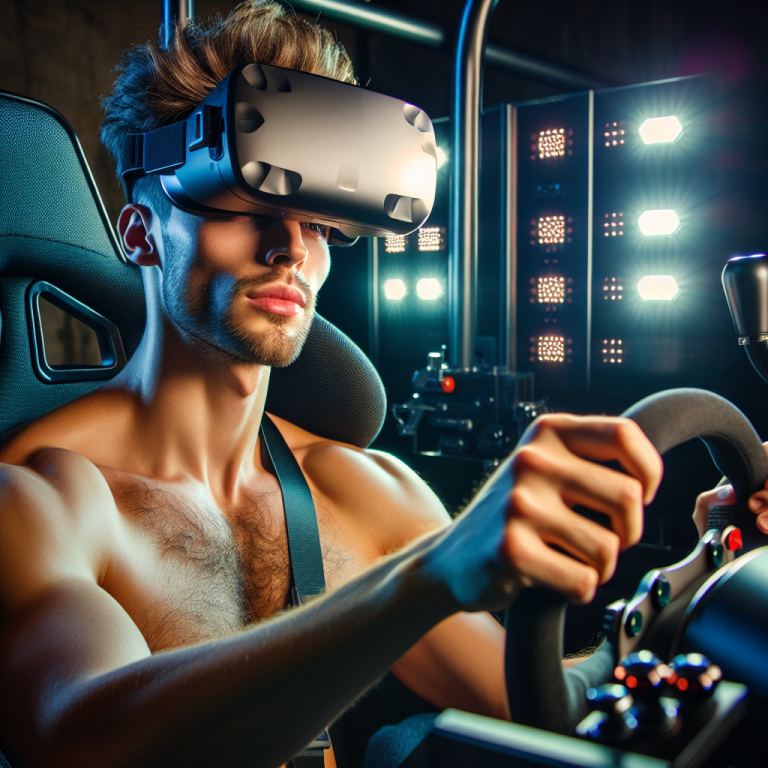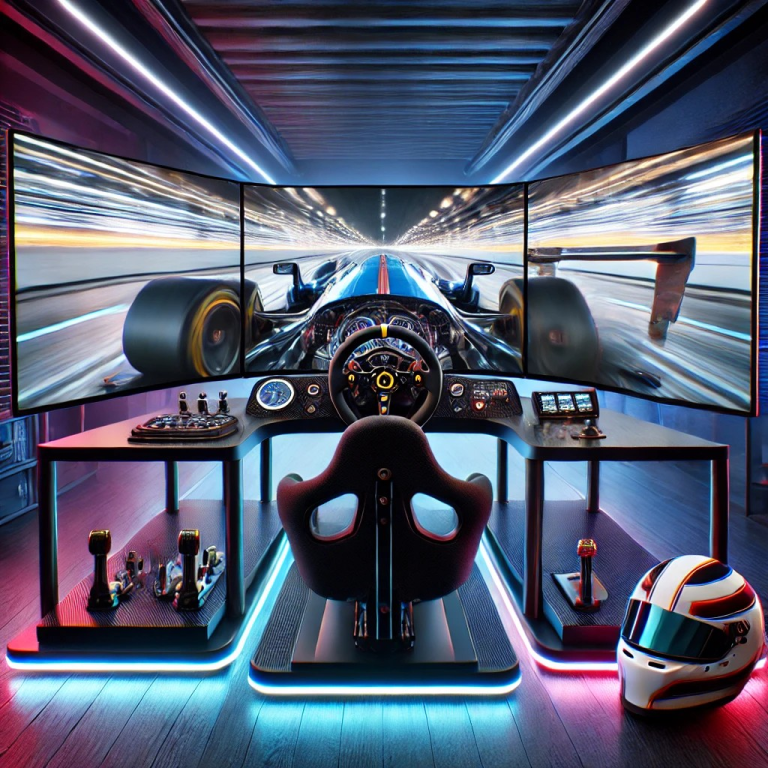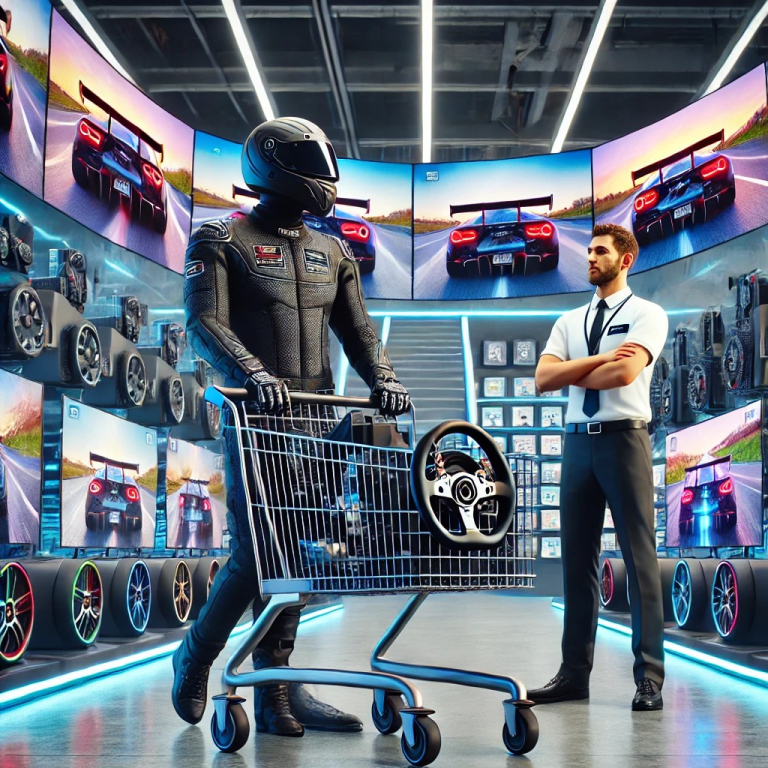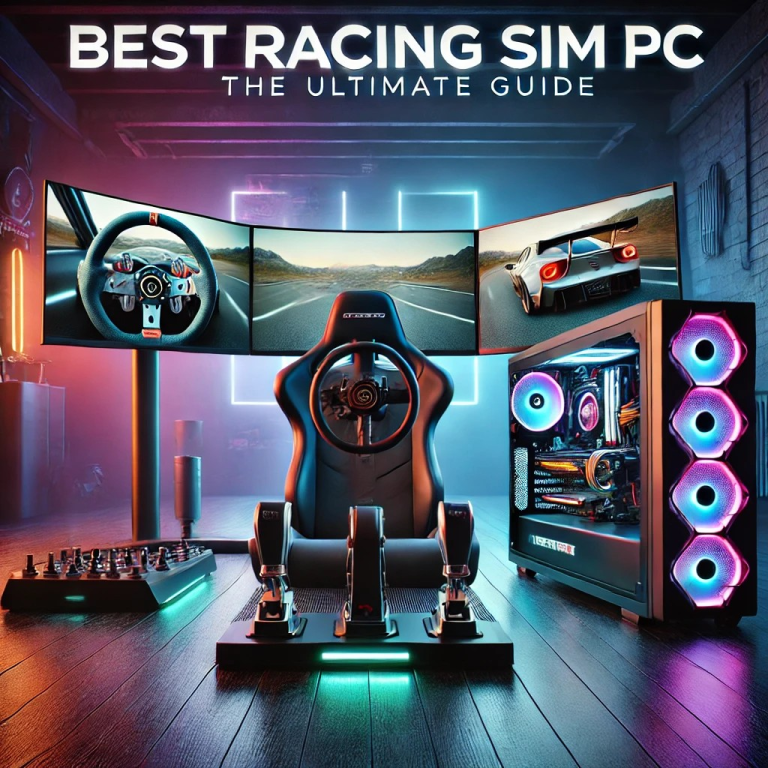Best Budget Racing Sim Setup: From Beginner to Pro
Racing isn’t just a sport—it’s an experience. The roar of the engine, the grip of tires on asphalt, and the thrill of crossing the finish line first. But what if you could bring that experience into your home?
With the best sim racing cockpit, you can. Whether you’re a beginner taking your first virtual lap or an enthusiast chasing the perfect apex, this guide will help you build the rig of your dreams—from budget setups to pro-level racing machines.
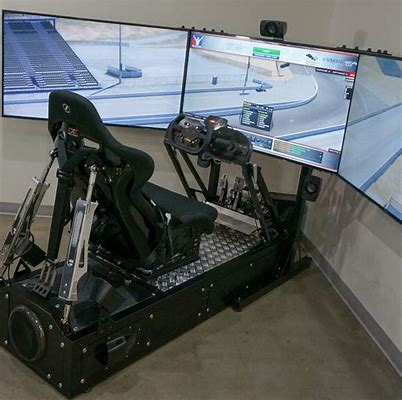
Understanding Your Sim Racing Needs
Before you dive into gear shopping, it’s important to understand your own needs. Think of this like tuning your car: what you want out of your setup will influence every decision you make. Here are a few key questions to guide you:
What Kind of Racer Are You?
Are you someone who enjoys casual weekend races, or do you find yourself striving to shave milliseconds off your lap times? For casual gamers, an affordable wheel and pedal set might be all you need. If you’re aiming to compete in online leagues or climb global leaderboards, you’ll want to invest in higher-quality gear that offers better precision and feedback.
How Much Space Do You Have?
Space is a critical consideration. If you’re setting up in a shared living room, a foldable rig might make sense. If you’re fortunate enough to have a dedicated gaming room, you can go all-in with a full racing cockpit and motion systems. Be sure to measure your space before committing to any purchases.
What’s Your Budget?
This is the big one. While it’s tempting to go straight for the pro-level gear, remember that even a basic setup can deliver a thrilling racing experience. Start with what you can afford and upgrade over time as your skills and passion grow.
Budget Breakdown: How Much Should You Spend?
Sim racing setups come in all shapes and sizes, and your budget will determine how far you can go right out of the gate. Here’s a breakdown to help you choose the right starting point:
Under $500: Getting Started
At this level, you’re focusing on the essentials. A solid wheel and pedal set, like the Logitech G923, is a perfect entry point. It offers reliable force feedback and compatibility with most consoles and PCs, making it ideal for beginners.
If you’re worried about not having a dedicated seat, don’t be! Many racers start by attaching their gear to a sturdy desk and using a regular chair. It might not be glamorous, but it gets the job done.
$500–$1,500: Stepping Up
If you’re ready to take your experience to the next level, this budget opens up a world of possibilities. The MOZA R5 wheelbase and SRP pedals deliver precision and durability that will change the way you race. Pair these with the Sim-Lab GT1 Evo rig, and you’ve got a stable, customizable foundation that will grow with you.
This setup answers a lot of common frustrations, like wobbly desks or lack of adjustability. Plus, the upgraded pedals give you better braking control, which can shave seconds off your lap times.
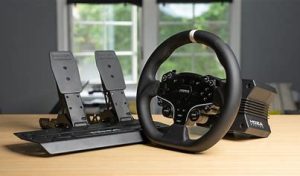
$1,500 and Up: Going Pro
Now we’re talking. A pro-level setup like the Fanatec Gran Turismo DD Pro offers direct-drive technology that delivers the most realistic force feedback possible. Combine it with hydraulic or load-cell pedals for precise braking control and the TK Racing Corsa Gaming Seat for pro-level comfort.
Is it worth the investment? If you’re serious about immersion and performance, absolutely. These setups replicate real-world physics so accurately that many professional drivers use them for training.
Choosing the Right Gear for Your Sim Racing Rig
Pedals and Shifters: Mastering Control
The importance of pedals, especially the brake pedal, cannot be overstated. In real-world racing, braking is where races are won or lost, and the same applies to sim racing.
- Basic Pedals: Entry-level pedal sets typically use potentiometers, which rely on the pedal’s position to determine braking force. While they’re serviceable, they lack the precision of more advanced systems.
- Load-Cell Pedals: These measure force rather than position, mimicking the feel of a real brake pedal. Load-cell systems, like MOZA SRP Pedals, allow you to modulate braking pressure with your foot, leading to smoother and faster laps.
- Hydraulic Pedals: At the top of the spectrum, hydraulic systems replicate the exact resistance and feedback of a race car’s brakes. They’re expensive but provide unparalleled realism.
Why does it matter? Imagine approaching a hairpin turn at top speed. With basic pedals, you might struggle to consistently brake just enough without locking up. Load-cell or hydraulic pedals give you the control needed to hit the perfect braking point every time.
Shifters, while not essential, add a layer of immersion. A model like Fanatec’s SQ V1.5 provides tactile feedback and a satisfying mechanical feel, perfect for those who enjoy manual transmissions.
Monitors vs. Ultrawide vs. VR: Which Display is Best?
Your display is the window to the racetrack, and the choice between triple monitors, ultrawide screens, or VR will shape your experience.
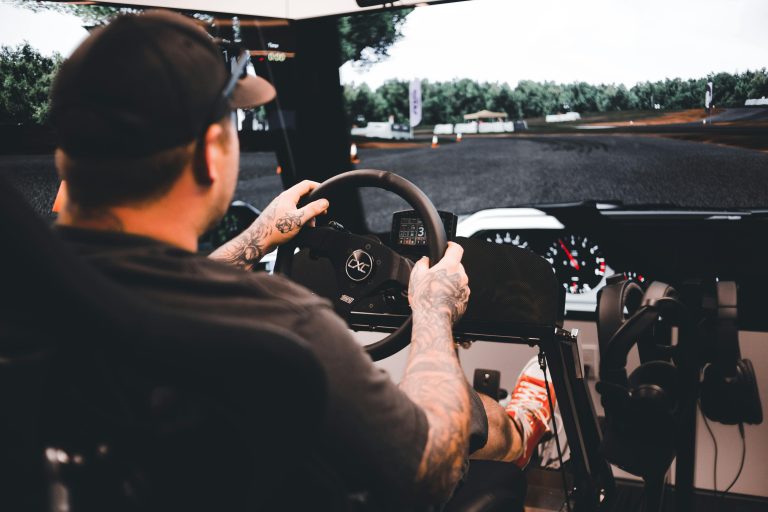
- Triple Monitors:
- Pros: The ultimate in immersion, triple monitors create a 180-degree field of view. This setup is ideal for seeing side mirrors and anticipating overtakes.
- Cons: Requires more space and a powerful PC to handle the additional resolution. Setup can also be complex.
- Best For: Racers who value immersion and have the space and budget to support it.
- Ultrawide Monitors:
- Pros: Easier to set up than triples and provides a wider view than a standard monitor. Models like the Samsung Odyssey G9 offer stunning visuals and a seamless experience.
- Cons: Doesn’t quite match the field of view of triple monitors, and curved screens may require adjustment for some.
- Best For: Those who want a balance of immersion and simplicity.
- Virtual Reality (VR):
- Pros: VR headsets, like the Meta Quest 3, offer total immersion by putting you inside the car. You’ll feel like you’re truly on the track.
- Cons: Can cause motion sickness for some and requires a high-performance PC.
- Best For: Racers seeking the most immersive experience possible.
Still unsure? If space and budget allow, triple monitors provide the best balance of immersion and usability. Ultrawides are a great middle ground, and VR is for those who prioritize feeling “in the car” above all else.
Motion Systems: Feeling Every Turn
Motion systems bring sim racing to life by replicating the movement of a real car.
- How They Work: Motion platforms, like those from DOF Reality, use actuators to tilt, lift, and move your seat in response to in-game physics. Accelerating pushes you back, braking tips you forward, and cornering leans you into the turn.
- Single-Axis vs. Full Motion: Entry-level systems might only tilt or pitch the seat, while advanced systems replicate full six-axis movement, including yaw and surge.
- Benefits: They add a visceral layer of realism, helping you feel tire grip and car weight shifts.
Worth it? If you’re serious about immersion and can invest in the required space and budget, a motion system is a game-changer.
Racing Seats and Rigs: Comfort Meets Stability
The right seat and rig are as important as the wheel or pedals. Without a stable, comfortable base, even the best gear can feel subpar.
- Seats:
- The TK Racing Corsa Gaming Seat combines professional-grade comfort with the aesthetic of a real racing bucket seat. It’s designed for extended use, ensuring you stay comfortable during marathon sessions.
- Other brands, like Trak Racer, offer seats with adjustable bolsters and reclining options for those who prioritize customization.
- Rigs:
- The Sim-Lab GT1 Evo is a standout for its sturdy aluminum profile and modular design. It’s easy to adjust and can accommodate future upgrades.
- More advanced rigs include motion capabilities or accessories like integrated monitor mounts.
Why it matters: A wobbly desk or an uncomfortable chair can ruin the experience. A solid rig keeps everything stable, while a supportive seat lets you focus on racing without distractions.
Conclusion: Build Your Racing Dream
Building your first sim racing rig is an exciting journey. Whether you’re starting with a Logitech G923 and a desk chair or diving straight into a Fanatec DD Pro and TK Racing seat, the possibilities are endless. Take your time, enjoy the process, and remember: every upgrade gets you closer to the perfect lap.
Ready to hit the track? Check out our recommended gear and start building your dream setup today. The road is yours—drive it.
